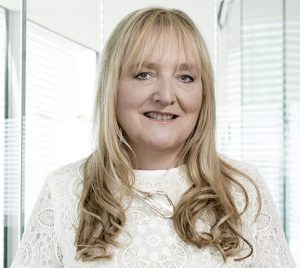
The road to development of Alzheimer’s disease therapeutics is littered with hundreds of failed candidates. A widely quoted 2014 Cleveland Clinic study showed a 99.6% failure rate between 2002 and 2012. That study found high attrition rates for Alzheimer’s treatments, with 72% of agents failing in Phase I, 92% failing in Phase II, and 98% failing in Phase III.
Yet that dismal track record has not appeared to have deterred efforts to treat the memory-robbing illness. A review article published in May 2021 listed no fewer than 126 Alzheimer’s drug or vaccine “agents” in 152 clinical trials, nearly half of them (74) in Phase II studies. Another 28 were in Phase III, with the other 24 in Phase I.
Two of those candidates, vaccines under development by Swiss-based AC Immune, recently reported positive albeit early data.
AC Immune’s ACI-35.030, a first-in-class anti-phosphorylated-Tau (pTau) vaccine candidate targeting early Alzheimer’s disease (AD)—and being developed with Johnson & Johnson’s Janssen Pharmaceuticals—announced interim data from a Phase Ib/IIa trial (NCT04445831) showing that the vaccine’s high dose produced strong induction of antibodies specific for pathological forms of Tau—namely pTau and its aggregated form, enriched paired helical filaments (ePHF)—at 10 weeks following treatment.
ACI-35.030’s data was consistent with that generated by the vaccine’s mid-range dose, which showed median anti-pTau antibody titers increasing from baseline by two orders of magnitude at week two after a first injection.
Based on the high-dose data, AC Immune intends to advance to later-stage development of ACI-35.030, which according to the company is the first AD vaccine candidate designed to generate antibodies targeting pathological pTau in the brain. The Phase Ib/IIa study has been expanded to 24 Alzheimer’s participants in the mid-dose sub-cohort, to generate additional immunogenicity and safety data.
Janssen is partnering with AC Immune under an up-to-$509 million collaboration launched in 2015.
Also recently, AC Immune has published positive preclinical data for another Alzheimer’s targeting candidate—the company’s wholly-owned amyloid-β (Aβ) vaccine ACI-24, designed to prevent Aβ plaque accumulation and enhance plaque clearance by generating antibodies against pathological Aβ, including oligomeric Aβ and Pyroglutamate Aβ (pyroGlu-Aβ).
In a study published in Brain Communications, AC Immune researchers showed that an optimized formulation of ACI-24 induced a broad polyclonal anti-Aβ response, including high titers of antibodies targeting variants of pyroGlu-Aβ peptides, truncated forms of the Aβ protein. The vaccine also showed itself to be well tolerated in non-human primates and mice.
AC Immune plans to launch clinical studies of the optimized ACI-24 during the first half of this year. An earlier formation has already been assessed in a Phase Ib/II trial and a Phase II trial, both in Alzheimer’s patients, as well as a Phase Ib trial in individuals with Down syndrome (DS), as the vaccine is also being developed for DS-related Alzheimer’s.
Later this month at the 15th International Conference on Alzheimer’s & Parkinson’s Diseases [AD/PD] in Barcelona, Spain, AC Immune plans to present data related to how vaccination with the optimized ACI-24 generated Immunoglobulin Gs with a broader N-terminal Aβ recognition than clinically-tested monoclonal antibodies or vaccines. “These data support fast progression of optimized ACI-24 into clinics as a disease modifying treatment for AD-DS (Alzheimer’s disease in Down syndrome (AD-DS) and AD,” according to an abstract (SO205 / #1103) of the presentation.
Why Alzheimer’s?
“You will ask me, why Alzheimer’s?” Andrea Pfeifer, PhD, CEO of AC Immune, told GEN Edge, contrasting the company’s interest in Alzheimer’s with her background, which has included work as a cancer researcher.
Pfeifer served as a visiting fellow at the Laboratory of Human Carcinogenesis Branch of the National Cancer Institute before heading the Nestlé Research Centre in Lausanne, Switzerland, where she established the microbiome as a major cross-category product development platform and co-founded the Life Science-focused Nestlé Venture Capital Fund.

AC Immune was established at the École Polytechnique Fédérale de Lausanne (EPFL) Innovation Park, where the company remains based.
“I feel that cancer has advanced so much, so I should work on something where there has seemed to be no advancement over the last 20 years. But quite a few things have happened positively. We understand much more. We are potentially close to a treatment, but it has been a very hard journey.”
Hard as the journey has been, it has not deterred companies from continuing to pursue Alzheimer’s treatments. Most recently, AbbVie agreed to acquire Belgian drug developer Syndesi Therapeutics for up to $1 billion, in a deal that expands AbbVie’s pipeline with Syndesi’s molecules designed to modulate the synaptic vesicle protein SV2A. The companies reason that modulation represents a promising approach to treating Alzheimer’s and other cognitive impairment diseases.
Last month, Seoul-based Biorchestra completed a $45-million Series C financing, with proceeds intended to fund its ambitious goal of developing the world’s first RNA-based treatment for neurodegenerative disease, specifically citing Alzheimer’s disease and Amyotrophic Lateral Sclerosis.
AC Immune’s ACI-35.030 and ACI-24 are both based on the company’s SupraAntigen® platform, which was initially developed by Nicolau and van Leuven to solve the problem of the lack of immunogenicity of “self” proteins. The technology generates conformation specific antibodies and is used to create products for active immunization (vaccines) and passive immunization (antibodies).
In addition to showing strong safety, AC Immune says, SupraAntigen generates antibodies that are highly specific for the pathological conformations of misfolded proteins.
SupraAntigen is one of AC Immune’s two proprietary tech platforms. The other is Morphomer®, initially developed through a collaboration of Lehn and Nicolau. Morphomer uses a rational chemical design designed to generate small molecules or “Morphomers” that bind specifically to misfolded proteins, break up neurotoxic aggregates and inhibit their aggregation and seeding. Morphomers also enable features deemed promising for CNS drugs, such as excellent brain penetration, bioavailability, and metabolic stability.
Conformation specificity
“What these two platforms are bringing to AC Immune, and hopefully to the field, is that we can easily generate conformation-specific molecules,” Pfeifer said.
Conformation specificity, she said, appears to be one of the key features of a pathology. Proteins like Aβ, β amyloid, or tau change their conformation when people get sick, making normal, healthy proteins pathological.
“The technologies which we have in place, our platforms, make molecules which are basically almost 100% specific for this pathological structure,” Pfeifer said. “In this respect, AC Immune can really offer highly specific molecules for these pathological proteins. We achieve safety because we only address a pathological form. And we achieve efficacy, because we are not generating antibodies or molecules which bind the normal forms, the healthy forms.”
AC Immune’s platforms, Pfeifer said, brings her back to her original background in cancer: “You really need to know what the patient has. Can you really provide a therapy specific for their structurally changed proteins? This is why precision medicine is rewarding.”
“I’m convinced today that the breakthrough in these diseases, where we have nothing today, will come from a precision medicine approach, where you have these highly sensitive diagnostics, which allows you to identify patient at risk, before they’re symptomatic, or even when we have a disease already, exactly identifying what disease they have,” Pfeifer added.
AC Immune has built a pipeline led by five products targeting Alzheimer’s. The company’s clinical-stage pipeline also includes semorinemab, a mild-to-moderate Alzheimer’s candidate being co-developed with Genentech, a member of the Roche Group. In November, AC Immune presented positive full top-line data from the Phase II Lauriet trial (NCT03828747) showing the anti-Tau antibody generated positive Phase II data showing a 43.6% reduction in the rate of cognitive decline compared to placebo.
Genentech, Lilly partnerships
The other two products are the Alzheimer’s preventing anti-Aβ antibody Crenezumab, also in Phase II and also being co-developed with Genentech; and an Eli Lilly-partnered Morphomer® Tau aggregation inhibitor, in preclinical phases for treating Alzheimer’s and for rare tauopathies (under the name ACI-3024). Lilly and AC Immune launched their Morphomer partnership in 2018, with the U.S. pharma giant agreeing to pay the Swiss biopharma CHF 1.89 billion ($2.1 billion).
Also in AC Immune’s pipeline are a Tau-positron emission tomography (PET) tracer being developed to diagnose Alzheimer’s (Phase II) and progressive supranu clear palsy (Phase I); ACI-7104, an optimized formulation of the anti-alpha-synuclein (a-syn) vaccine PD01 targeting Parkinson’s disease and alpha-synucleinopathies (Phase II ready), the central asset of a portfolio the company acquired last year for $58.7 million in stock from AFFiRiS; and an A-syn PET tracer targeting the same two disorder categories (Phase I, with first-in-class ACI-12589 expected to present first in human data at AD/PD).
AC Immune’s preclinical pipeline consists of six products—An anti a-syn antibody indicated for Parkinson’s and an undisclosed orphan neurological disease (“NeuroOrphan”) indication; a Morphomer® a-syn inhibitor vs. Parkinson’s and a-synucleinopathies; an anti-TAR DNA-binding Protein (TDP)-43 antibody targeting limbic-predominant age-related TDP-43 encephalopathy; a TDP-43 PET tracer vs TDP-43-opathies; an anti-(NOD)-like Receptor Protein (NLRP) 3 ASC antibody (apoptosis-associated speck-like protein containing a CARD or PYCARD) vs an unspecified NeuroOrphan indication; and a Morphomer® NLRP-3-ASC, for both non-CNS and unspecified NeuroOrphan indications.
At AD/PD, AC Immune also plans to present data showing its TDP-43 immunotherapy decreases neuropathology and confers neuroprotection through microglial engagement in mouse models of amyotrophic lateral sclerosis (ALS) and frontotemporal dementia—as well as its efforts toward optimizing PET Tracers for TDP-43 proteinopathies.
“I would say in the next [few] years we will be where we were in oncology 35 years ago,” Pfeifer said.
“When it comes to diagnostics, and the identification of specific pathologies in Parkinson’s and Alzheimer’s, I think it will be in the next two years when it comes to having the efficient therapies we’re looking for,” Pfeifer said. “It can actually happen relatively quickly if some of the studies ongoing are reading out positively. Within the next 2-5 years, we should make really big steps for diagnostic and potentially therapeutics.”





